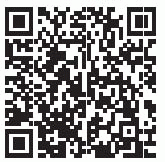Frontal Lobe Epilepsy
OBJECTIVES
To illustrate a case of frontal lobe epilepsy (FLE).
To review the diagnostic pitfalls associated with this disorder. (Case courtesy of Dr. David Ficker, University of Cincinnati)
VIGNETTE
This 46-year-old man had unusual spells for approximately 20 years. These consisted of episodes of fear, cold feeling, and well-formed speech (“Oh my God”). He was able to ambulate during these spells. The initial frequency was of 15 to 20 per day. The episodes occurred during the day and at night, while awake. His evaluation during an admission to the Epilepsy Monitoring Unit, as shown in the video, showed one such event in the absence of epileptiform activity.
 |
Our patient demonstrated unusual events consisting of purportedly voluntary movements and intelligible vocalization of religious connotation, which were interpreted as psychogenic. This impression could have persisted given his ability to respond, even if inappropriately, to verbal commands during these spells; his resumption of normal behavior, including reading, immediately thereafter; and his seemingly counterintuitive postspell amnesia. Furthermore, his brain magnetic resonance imaging (MRI) and prior ictal electroencephalographs (EEGs) were normal. It was the brief appearance of right frontal beta discharges at the outset of his last video-EEG-documented spell, which prompted the diagnosis of right frontal lobe epilepsy, fitting with the localizing value of a well-formed ictal speech (see Table 104.1). Treatment with carbamazepine brought marked reduction in the frequency of the spells, a response that was further optimized with the later addition of phenytoin.
FLE is characterized by seizures with complex, often bizarre or violent rocking axial and pelvic movements, bipedal and bimanual activity, more typically occurring during sleep and often accompanied by normal EEG waveforms (the epileptic typically occupies the mesial surface of the frontal lobes) and neuroradiological findings. These features make FLE difficult to distinguish from other nonepileptic nocturnal paroxysmal events, such as parasomnias (Table 108.1) and psychogenic seizures. FLE could present in a variety of phenotypes, including as absencelike seizures, complex partial-type seizures, postural tonic spasms and a number of “parasomnic” behaviors, such as repetitive rocking or rolling, ambulation (“agitated somnambulism,” “hypermotor” and/or pseudoperiodic movements). Hence, FLE needs to be distinguished from non-rapid eye movement parasomnias such as sleep-wake transition disorders (rhythmic movement disorder, sleeptalking, and nocturnal leg cramps) and arousal disorders (sleepwalking, sleep terrors, and confusional arousals), as well as from rapid eye movement (REM) sleep behavior disorder.
Stay updated, free articles. Join our Telegram channel

Full access? Get Clinical Tree








